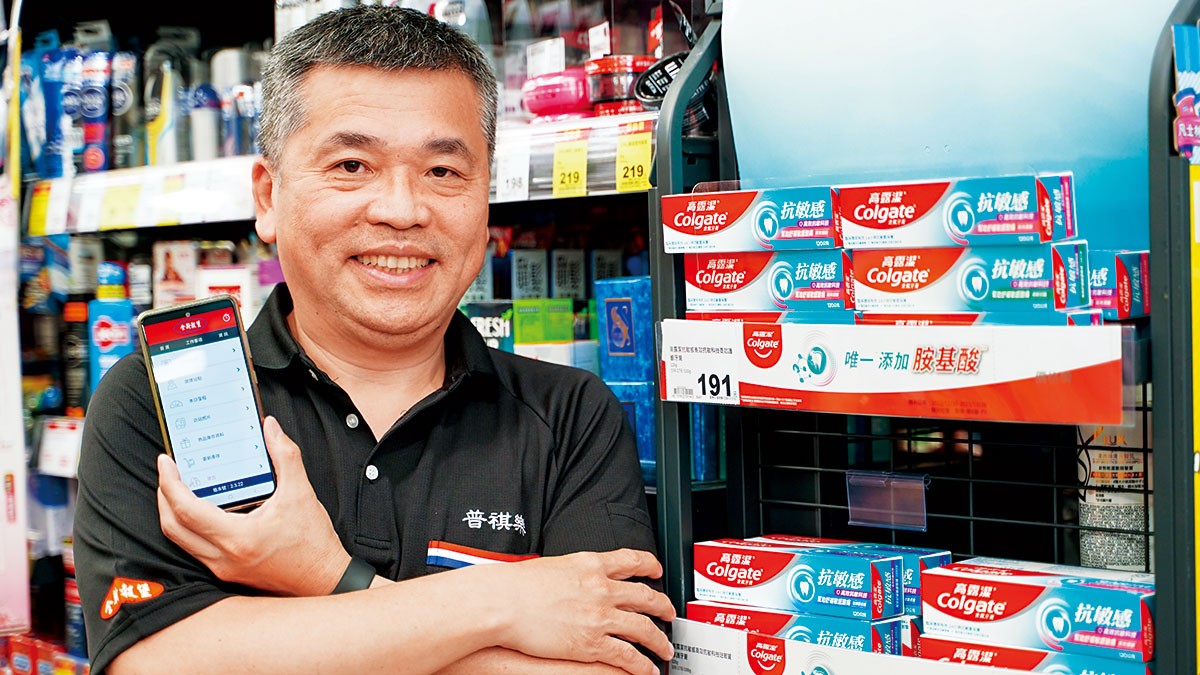Pro-Luck Co., Ltd. has been a reliable channel service provider for large chain stores like PX Mart since its establishment in 1998, under the leadership of General Manager Zhang Shenmin. The company has actively entered various store locations to manage goods, enhance displays, restock, and handle sales, providing comprehensive product management.
However, with Pro-Luck representing over a hundred products and serving thousands of stores, there was an urgent need for a more systematic workflow to effectively enhance service efficiency and help the company expand its service capacity.
Fortunately, Zhang Shenmin heard a suggestion from a senior who had designed an app for convenience stores. The idea was to use a mobile app for employees to clock in, clock out, and request leave. This sparked an idea in Zhang’s mind, as he recalled the long-standing issues of information not being timely or transparent, causing doubts and distrust among clients.
“If we can use an app to instantly transmit images and information, allowing clients to always be updated on the latest progress, it will definitely improve satisfaction,” said Zhang Shenmin.
In 2015, Zhang Shenmin began collaborating with Unidyna to develop the "Sales King" app, streamlining business service processes, setting clear execution standards, and enhancing management efficiency through digital tools.
**Stepping into Digital Transformation with App Development**
Enhancing customer satisfaction was indeed Pro-Luck’s top priority. Previously, when vendors visited stores, they would often find empty shelves and question the sales staff’s restocking efforts. However, “The sales staff might have just restocked the shelves, only for them to be immediately emptied by consumers. Isn’t that a good thing?” Zhang Shenmin said with frustration.
At that time, Pro-Luck used manual shelving, photographing as evidence and archiving it, but vendors had to wait until the next month to see the reports, causing misunderstandings and distrust. Additionally, the paper-based task assignment method led to inefficiency.
“We represent over a hundred items, and sales staff spent a lot of time just flipping through reports,” Zhang Shenmin hoped that the app could shorten the business workflow and help the company move towards digital management and transformation.
Zhang’s vision became a reality. Sales staff only needed to open their phones to check the day’s work schedule; upon arriving at the store, the app would automatically clock in and display the store’s inventory status and tasks. After restocking and improving product displays, photos taken would be automatically sent to the corresponding vendors. Even if the photos did not meet standards, the app would immediately request corrections.
In other words, this tool not only allowed sales staff to complete tasks in one go, saving significant time on report preparation, but also provided clients with real-time feedback on Pro-Luck’s execution.
On the other hand, once the sales staff left the store, the app would automatically clock them out, allowing supervisors to clearly track each employee’s working hours, progress, and time and expenses spent on each client, achieving objective performance management.
**Building Consensus and Improving Efficiency**
Technology always comes from human needs, and no matter how powerful the app’s functions are, it must be user-friendly, and employee resistance can emerge.
In 2015, Pro-Luck faced such challenges.
“Employees felt like the company had sent a spy to monitor them,” Zhang Shenmin admitted, recalling strong internal resistance during the development phase. However, he personally engaged in sincere communication, organizing meetings with the sales department, listening to frontline staff’s pain points, and tirelessly explaining the benefits of using the app.
He provided many examples to the sales staff, such as how they often had to wait until the weekend to organize reports after traveling between stores, forgetting where photos were taken and spending additional time recalling details. He also offered incentives like “doubling sales bonuses” to gradually change employees’ attitudes and encourage them toward a common goal.
With the app going live in 2016, employees immediately felt the convenience of the new tool, including faster product shelving and reporting, and reduced extra time spent on report preparation. The app’s automatic clock-in feature also eliminated issues of forgotten clock-ins affecting salary, “We truly returned time to our employees,” Zhang Shenmin proudly stated.
During the year-long app development phase, the design of location-based clock-ins and time stamps significantly impacted team morale, but Zhang Shenmin never wavered. He personally led every app development meeting, ensuring the team understood the company’s direction.
Even when the team had various opinions on the app’s functions and delays in launching, Zhang chose to launch the app first and continue improving its functions, knowing that change takes time and a steady approach was better for resource-limited Pro-Luck.
After enduring the pain of transformation, from 2016 to 2021, Pro-Luck’s annual revenue contribution from sales staff rose from 2.45 million to 5.33 million. With real-time information updates, the team quickly adapted and expanded service coverage from 23 to 45 clients. Pro-Luck’s revenue and profit grew simultaneously, reaching 480 million in revenue and 160 million in profit by 2021, nearly tripling compared to 2016.
However, Zhang Shenmin’s ambition does not stop there. In the data-driven era, he is keenly aware of the value of the data at hand.
For example, photos uploaded daily by sales staff, if combined with image recognition, could help clients analyze competitive products’ conditions. Another possibility is integrating sales, inventory, and product information into AI for product lifecycle management, such as automatically reminding when a can of milk approaches its expiration date.
“To achieve world-class service, we need to make service comprehensive and more precise,” he said reflectively. From app development to AI applications, Pro-Luck’s upgrade journey is just beginning its exciting next chapter.
Original Article: “Using AVM for Effective Management” - Author: Wu Anni


